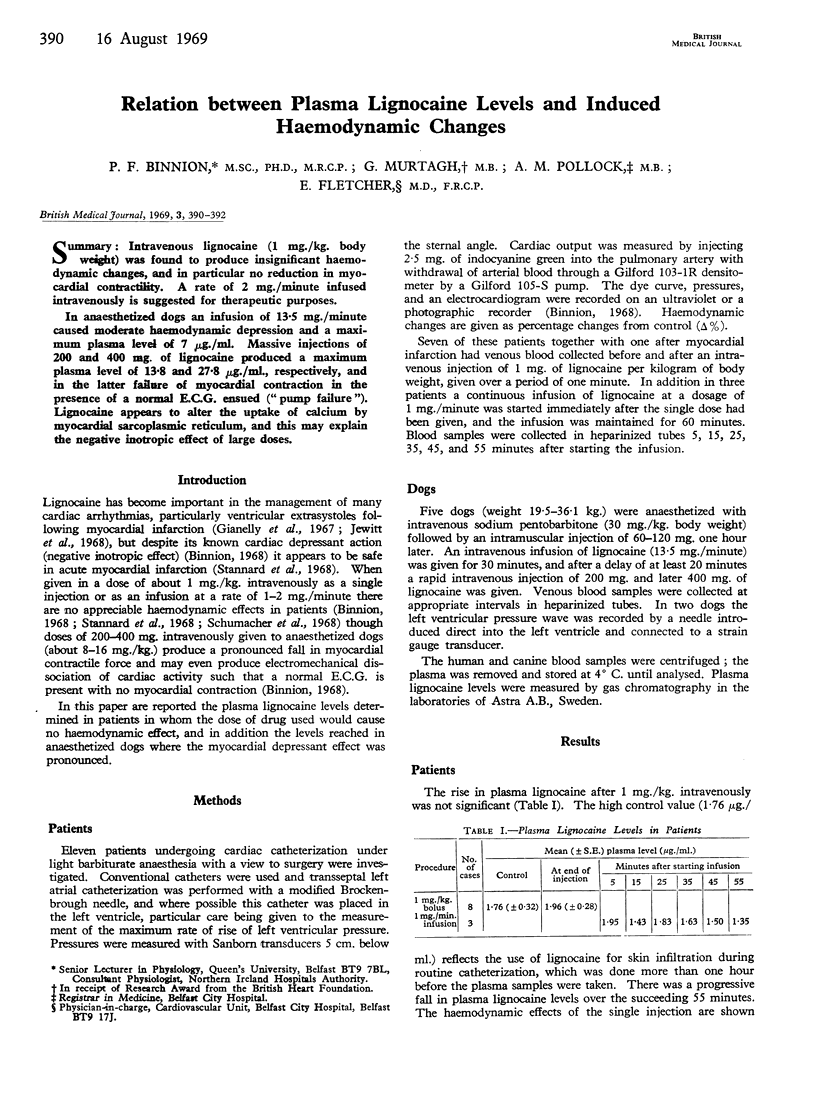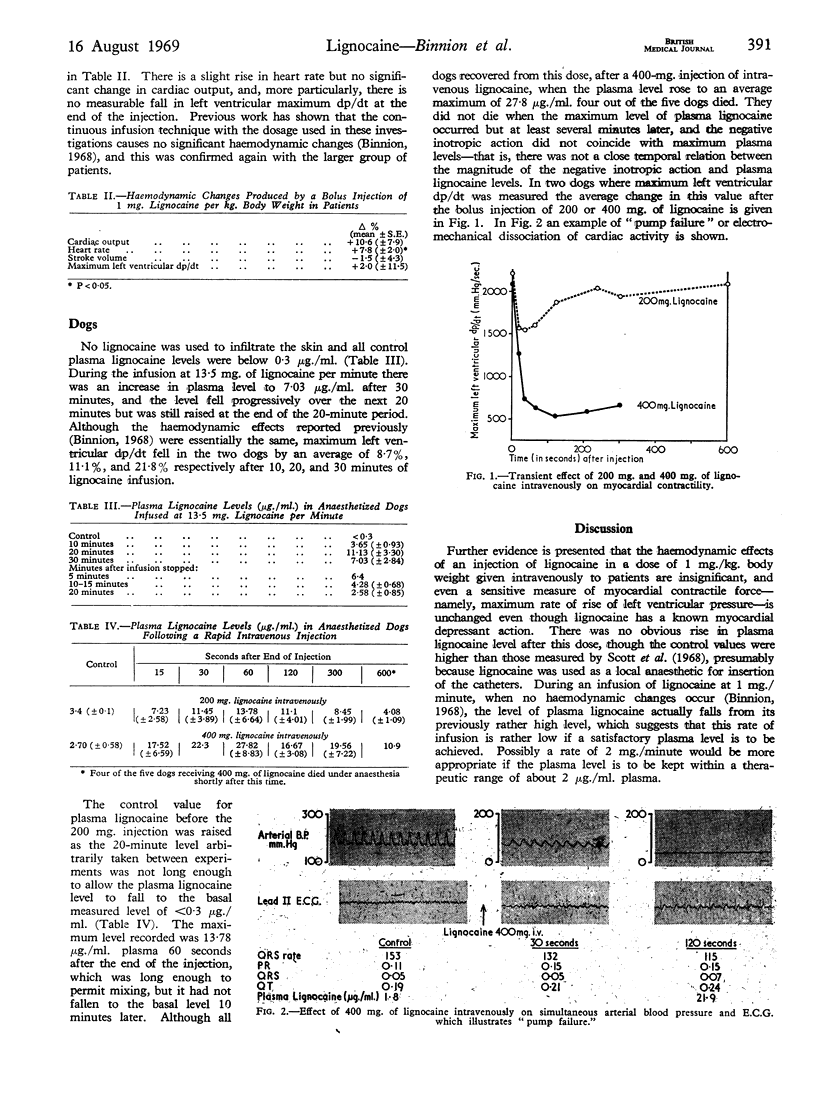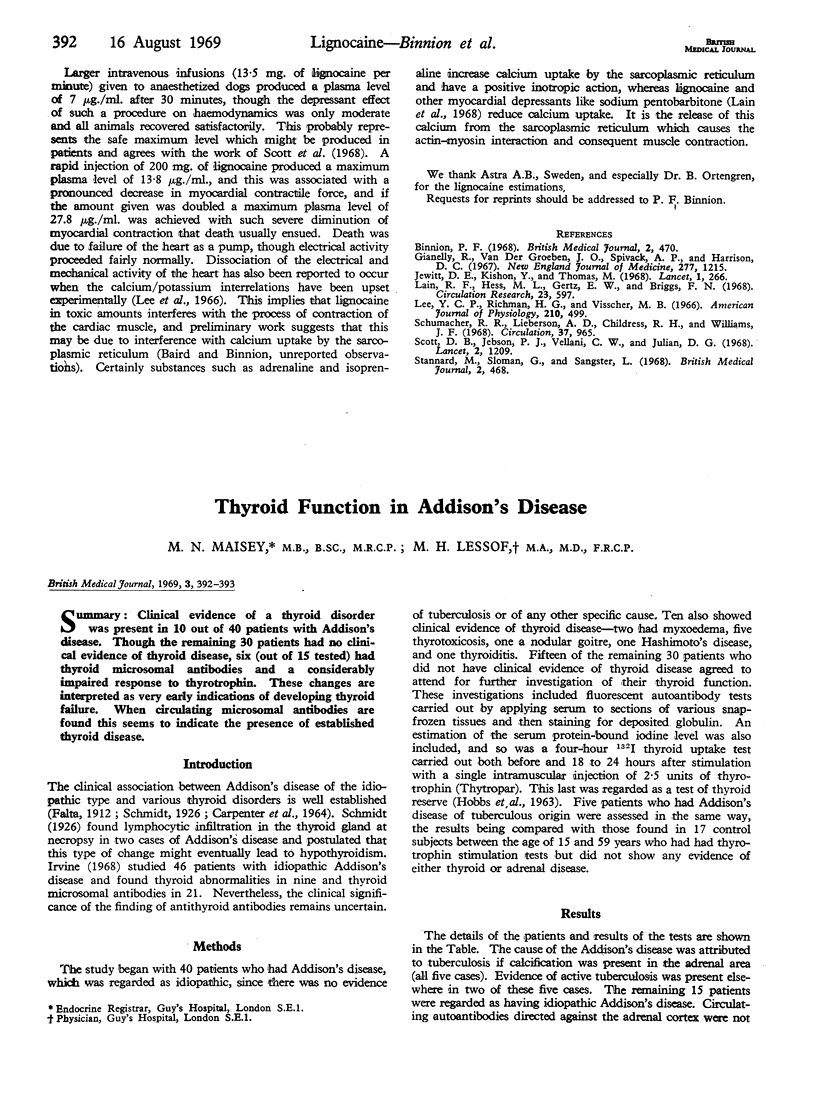Abstract
Intravenous lignocaine (1 mg./kg. body weight) was found to produce insignificant haemodynamic changes, and in particular no reduction in myocardial contractility. A rate of 2 mg./minute infused intravenously is suggested for therapeutic purposes.
In anaesthetized dogs an infusion of 13·5 mg./minute caused moderate haemodynamic depression and a maximum plasma level of 7 μg./ml. Massive injections of 200 and 400 mg. of lignocaine produced a maximum plasma level of 13·8 and 27·8 μg./ml., respectively, and in the latter failure of myocardial contraction in the presence of a normal E.C.G. ensued (“pump failure”). Lignocaine appears to alter the uptake of calcium by myocardial sarcoplasmic reticulum, and this may explain the negative inotropic effect of large doses.
Full text
PDF


Images in this article
Selected References
These references are in PubMed. This may not be the complete list of references from this article.
- Binnion P. F. Toxic effects of lignocaine on the circulation. Br Med J. 1968 May 25;2(5603):470–472. doi: 10.1136/bmj.2.5603.470. [DOI] [PMC free article] [PubMed] [Google Scholar]
- Gianelly R., von der Groeben J. O., Spivack A. P., Harrison D. C. Effect of lidocaine on ventricular arrhythmias in patients with coronary heart disease. N Engl J Med. 1967 Dec 7;277(23):1215–1219. doi: 10.1056/NEJM196712072772301. [DOI] [PubMed] [Google Scholar]
- Lain R. F., Hess M. L., Gertz E. W., Briggs F. N. Calcium uptake activity of canine myocardial sarcoplasmic reticulum in the presence of anesthetic agents. Circ Res. 1968 Nov;23(5):597–604. doi: 10.1161/01.res.23.5.597. [DOI] [PubMed] [Google Scholar]
- Lee Y. C., Richman H. G., Visscher M. B. [Ca++] and [K+] interrelations influencing mechanical and electrical events in cardiac activity. Am J Physiol. 1966 Mar;210(3):499–504. doi: 10.1152/ajplegacy.1966.210.3.499. [DOI] [PubMed] [Google Scholar]
- Schumacher R. R., Lieberson A. D., Childress R. H., Williams J. F., Jr Hemodynamic effects of lidocaine in patients with heart disease. Circulation. 1968 Jun;37(6):965–972. doi: 10.1161/01.cir.37.6.965. [DOI] [PubMed] [Google Scholar]
- Scott D. B., Jebson P. J., Vellani C. W., Julian D. G. Plasma-levels of lignocaine after intramuscular injection. Lancet. 1968 Dec 7;2(7580):1209–1210. doi: 10.1016/s0140-6736(68)91692-9. [DOI] [PubMed] [Google Scholar]
- Stannard M., Sloman G., Sangster L. Haemodynamic effects of lignocaine in acute myocardial infarction. Br Med J. 1968 May 25;2(5603):468–469. doi: 10.1136/bmj.2.5603.468. [DOI] [PMC free article] [PubMed] [Google Scholar]



